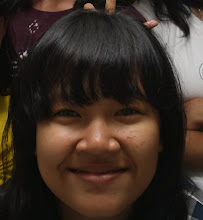10. The Kutai Kartanegara Bridge (580 m)

9. The Kahayan Bridge (640 meter)

8. The Barelang Bridges (642 meter) - (The Tengku Fisabillilah Bridge)

7. Rumpiang Bridge (753 meter)

6. Mahulu Bridge (789 meter)
Mahakam Ulu (Mahulu) which bridge under construction crossing Mahakam river. This river is used for coal transport way. This bridge is one of five bridges which crossing the Mahakam river and they are Martadipura, Kartanegara, Mahulu, Mahkota I, and Mahkota II. The bridge length is 789 m with main channel is 200 m.

5. Barito Bridge (1082 meter)
Barito Bridge is a bridge which divides the Barito River in Banjarmasin, South Kalimantan, Indonesia. This bridge has a length of 1082 meters across the Barito River 800 yards wide and the small island (Pulau Bakut) 200 meters wide. The bridge consists of the main bridge 902 meters long, and the bridge approach 180 meters, 10.37 meters wide. Height of free space the main bridge 15 to 18 meters, so that could be used for water traffic.

4. Ampera Bridge (1117 m)
The bridge that spread above Musi River is becomes the main characteristic of Palembang city. It was built on 1962 - 1965. Ampera Bridge has 1117 meter of length and 78m high of tower. However, the special feature of this bridge that it can be opened and closed, the mechanism is no longer working, whereas is fact, it is the only bridge in Indonesia with the open-and-closed mechanism. Now it is only history. The bridge has to be lifted up of the middle shares each time there every king sized ship, with height above nine meters, will pass by quickly. Both for going to downstream and also which going to the upstream.

3. The Tengku Agung Sultanah Latifah Bridge (1196 meter)

2. The Pasupati Bridge (2147 meter)
As Bandung's newest icon, Pasupati cable stayed bridge (2147 meters, 21.53 meter wide) is probably quite well known among those who know this city. The stories behind it, however, may not be as familiar to those who live outside Bandung.

1. The Suramadu Bridge (5438 meter)
The Suramadu Bridge, also known as the Surabaya–Madura Bridge, is a bridge with three cable-stayed sections constructed between Surabaya on the island of Java and the town of Bangkalan on the island of Madura in Indonesia. Opened on June 10, 2009. The 5438 meters bridge is the longest in Indonesia and the first bridge to cross the Madura Strait.

http://www.shevceba.co.cc/
http://dailyphotoku.blogspot.com/
http://en.wikipedia.org/
http://www.indonesia-tourism.com/
http://indahnesia.com/
http://bandungdailyphoto.com/
http://www.skyscrapercity.com/
pictured by:
flickr.com
eastjava.com









































5 komentar
Label: beautiful Indonesia